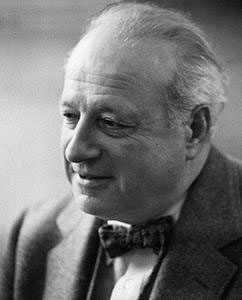
In the eighteenth century, background music was an essential part of courtly life. Many composers earned a bit of extra money by churning out selections of lightweight pieces to serve as a musical back drop for formal dinners and social chatter. Mozart, Haydn and Boccherini were not averse to writing for such courtly occasions and even for private homes if the owners could afford to hire a small orchestra.
The music usually took the form of a suite of dances or a selection of five or six independent movements. There were invariably many repeated sections to spin them out. They were often called divertimentos, or divertimenti to use the more correct Italian plural. The word comes from the verb devertire, meaning “to amuse” and for practical reasons they were generally scored for a small ensemble rather than a large orchestra.
Sometimes the selections were known as serenades or cassations. Despite their different names, there was little to distinguish one from another. Mozart’s Eine Kleine Nachtmusik is one famous example, though contrary to popular belief the German title actually means “a little serenade”.
During the nineteenth century the divertimento faded in popularity because there were fewer courts, and social changes were gradually moving musical performance from the private court to the public concert hall. The divertimento was revived in the twentieth century, not as a form of background music but as a work for the concert performance.
The New England composer Walter Piston was a Professor of Music at Harvard University, and in the 1950s he wrote four books on technical aspects of music which are considered classics in their fields: The Principles of Harmonic Analysis, Counterpoint, Orchestration, and Harmony. Even today, they’re still considered essential reading for advanced music students. I have the books on orchestration and harmony on my shelves. At least, I thought I had. When I went to look for them this morning they had mysteriously disappeared.
During World War I Piston joined the U.S. Navy as a band musician after rapidly teaching himself to play saxophone. While he was there he discovered that wind instruments were “just lying around” and as he later remarked “no one minded if you picked them up and found out what they could do.” So Piston did what anyone else would in the circumstances. He taught himself to play them all.
In later years Piston became a prolific composer with eight symphonies to his name and a wealth of other works. The Divertimento for Nine Instruments dates from 1946 and it’s scored for string quintet and four woodwind instruments. I shall leave you to guess what they are. It’s a delightful three-movement work and neo-classical in style, using the characteristic “wrong-note” harmonies favoured by Stravinsky and Milhaud. It sounds as though it came from the same stable as Stravinsky’s Dumbarton Oaks concerto.
Incidentally, the neo-classical style was a trend which emerged during the two World Wars, in which composers sought to return to the principal qualities of eighteenth century music: an emphasis on balance, clarity and economy of means. Stravinsky modestly claimed to be the “inventor” of the genre but Sergei Prokofiev’s First Symphony of 1917 was probably the first important neo-classical composition.
This work has been described as being neo-classical but perhaps the expression “neo-baroque” would more appropriate. Throughout the work and especially in the last movement, the composer borrows an idea from the baroque concerto grosso in which a small group of soloists alternate with the full orchestra creating a contrast in texture. Even so it’s the Hungarian qualities that dominate the work.
Bartók and Liszt are considered Hungary’s greatest composers. Bartók was born in the small town of Nagyszentmiklós. Now, say it slowly after me: NAHJ-zent-mee-glohsh. Try to get it right, because I might test you later. This incredible work was the last that Bartók wrote before he hastily left Hungary and immigrated to the United States during the outbreak of World War II. He completed it in 1939 after fifteen days of busy composing while on holiday in Switzerland.
The dance-like first movement opens with energetic repeated chords played by the lower strings while a characteristic gipsy-style melody appears in the violins. The music is punctuated with irregular rhythms and unexpected turns of phrase. The dark and ominous second movement is a strangely unsettling experience. It contrasts rich harmonies with an unnerving passage that seems to push tonality to its limits. The lively and playful last movement is more neo-baroque in sound but its Hungarian heritage is unmistakable. It’s also full of musical surprises.
 |
 |
 |





